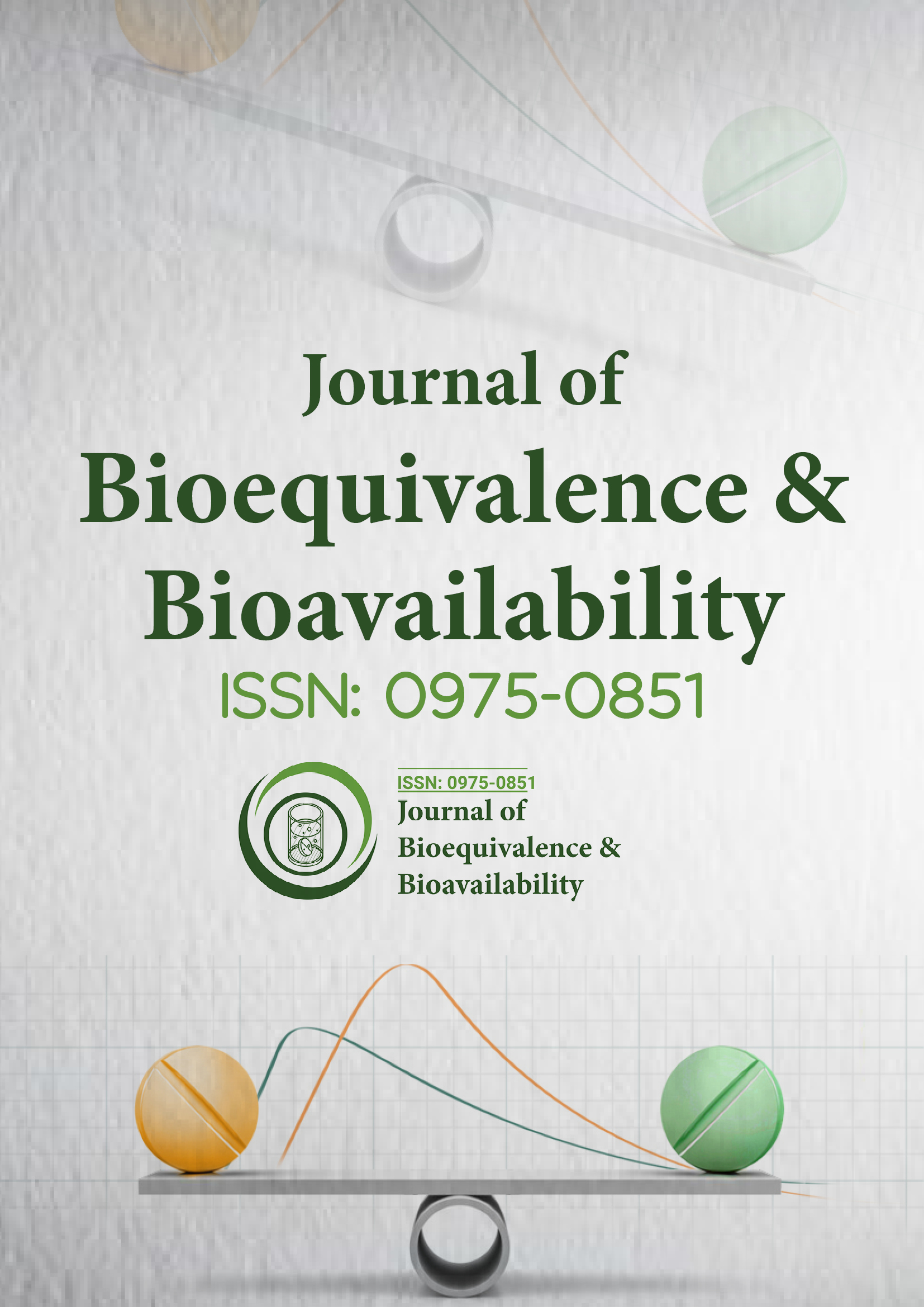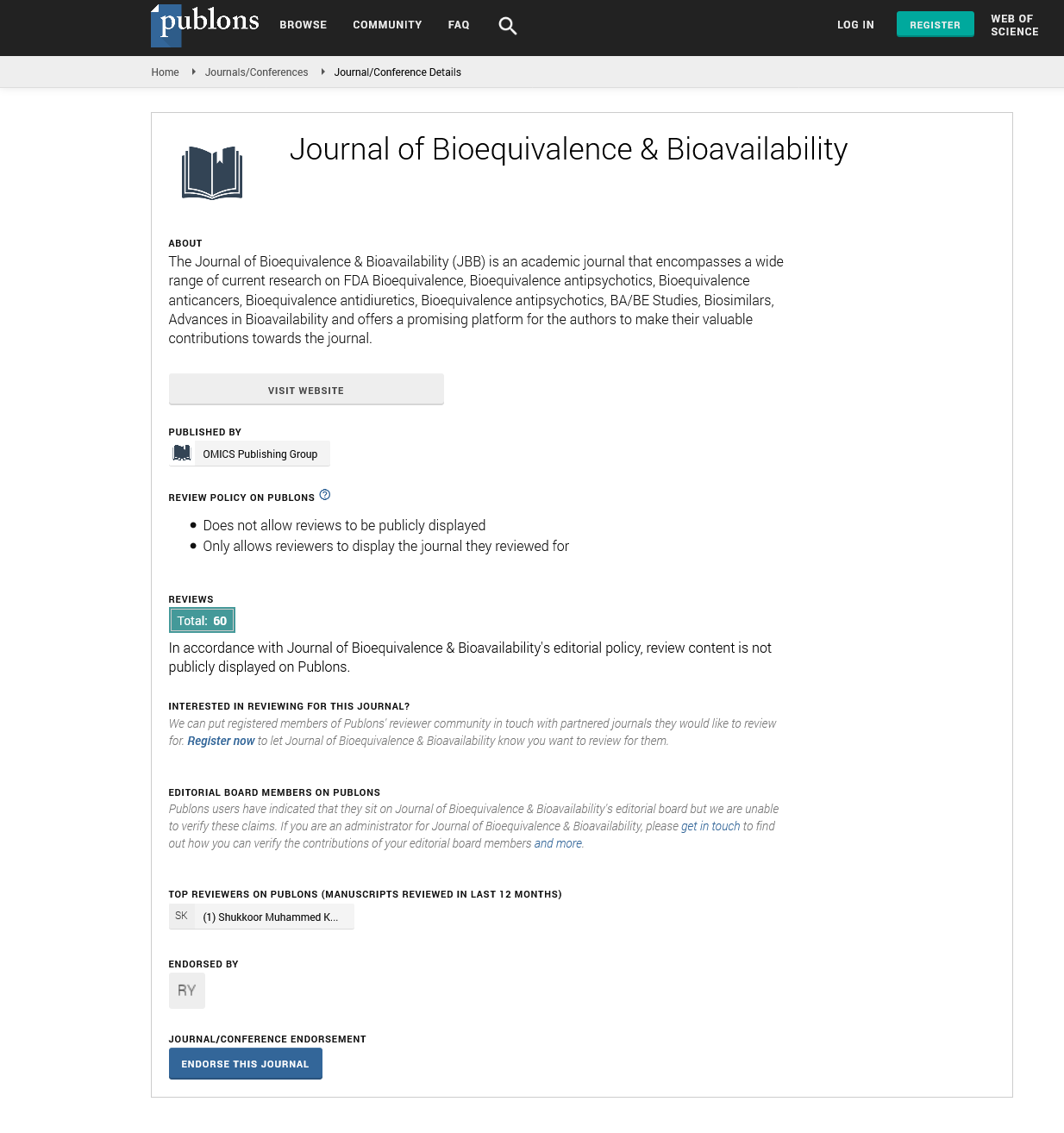Indexed In
- Academic Journals Database
- Open J Gate
- Genamics JournalSeek
- Academic Keys
- JournalTOCs
- China National Knowledge Infrastructure (CNKI)
- CiteFactor
- Scimago
- Ulrich's Periodicals Directory
- Electronic Journals Library
- RefSeek
- Hamdard University
- EBSCO A-Z
- OCLC- WorldCat
- SWB online catalog
- Virtual Library of Biology (vifabio)
- Publons
- MIAR
- University Grants Commission
- Geneva Foundation for Medical Education and Research
- Euro Pub
- Google Scholar
Useful Links
Share This Page
Journal Flyer

Open Access Journals
- Agri and Aquaculture
- Biochemistry
- Bioinformatics & Systems Biology
- Business & Management
- Chemistry
- Clinical Sciences
- Engineering
- Food & Nutrition
- General Science
- Genetics & Molecular Biology
- Immunology & Microbiology
- Medical Sciences
- Neuroscience & Psychology
- Nursing & Health Care
- Pharmaceutical Sciences
Short Communication - (2021) Volume 0, Issue 0
Alzheimer’s Disease Implications and its Strategies
Khadar Khan*Received: 01-Jun-2021 Published: 22-Jun-2021, DOI: 10.35248/0975-0851.21.s3.001
Description
Alzheimer's infection (AD) is the most widely recognized neurodegenerative issue showed by reformist loss of memory followed by irreversible dementia [1]. Promotion neurodegeneration is described by the deficiency of neurons went before by cell layer and cytoskeleton harm because of a complex of atomic pathways that at long last lead to development of amyloid-β (Aβ) plaques and neurofibrillary tangles in the mind tissue.
Current medicines of AD can just mostly ease side effects, however there exists no fix to stop or moderate neurodegeneration. The primary significant class of medications used to treat AD was cholinesterase inhibitors which hinder the legitimate working of the protein that separates acetylcholine. These medications keep a more significant level of acetylcholine in the synaptic separated accordingly advance flagging and improve neuronal capacity; notwithstanding, they don't forestall the hidden neurodegeneration [2]. Then again, all ebb and flow disease modifying procedures focusing on various sub-atomic pathways engaged with AD have fizzled in stage 3 clinical preliminaries.
As revealed in our new itemized contemplates, major atomic pathways engaged with AD can possibly be focused on through nanotechnology strategies and sub-atomic structure blocks (MBBs) [3]. In synopsis, the current and imagined uses of nanotechnology in nervous system science comprise of neuroprotection, neuroregeneration and medication conveyance past the blood cerebrum hindrance (BBB). Among the previously mentioned applications, nanotechnology neuroprotective methodologies can be of extraordinary ramifications in powerful illness altering techniques for AD, particularly when the designated sub-atomic pathways are engaged with more starting periods of AD pathogenesis. This report is centered around such neuroprotective methodologies through nanotechnology sub-atomic structure blocks (MBBs). To this end, we initially expand on sub-atomic pathways of Alzheimer's illness focused on by each gathering of nanotechnology MBBs. Security against Glutamate Excitotoxicity A significant neurotic occasion in AD is synaptic disappointment, described by unnecessary synaptic arrival of glutamate or potentially impedance of glutamate freedom systems in the synaptic parted. Glutamate along with D-serine are the essential excitatory synapses in the cerebrum that actuate voltage-subordinate calcium channels through the N-methyl-Daspartate (NMDA) receptors. Unreasonable synaptic glutamate, thusly, prompts a problematic convergence of calcium particles causing an excess of intracellular calcium, setting off a few harming pathways in neurons, and eventually neuronal passing. In this way, an infection altering approach against AD synaptic pathology could be forestalling the unreasonable glutamate motioning by obstructing the NMDA-receptor channels. From the primary perspective, NMDA receptors are co-assemblies of various receptor subunits from various subunit families: NR1 and NR2.
Among these subunits, NR1 has the fundamental part in NMDA receptor work [4]. Co-gathering of various individuals from the previously mentioned subunit families prompts arrangement of various NMDA receptor subtypes with discrepant biophysical and pharmacological properties. An assortment of restricting locales for ligands exists in the design of NMDA. These ligand/restricting site associations are nearly subunit particular and result in guideline of NMDA receptor work. The geographies of NMDA receptor subunits are practically something similar. Every subunit comprises of an extracellular N-terminal area, four layer spaces and an intracellular carboxyl terminal. The extracellular space (Nterminal) shapes the glycosylated enormous piece of every subunit, answerable for restricting with ligands. Among agonist ligands, glycine ties to NR1 and glutamate ties to NR2 restricting locales [5].
Conclusion
The first and second intra-membranous areas are interconnected through an intramembrane circle. The M2 space frames the receptor channel pore. The intracellular space (carboxyl terminal) adds to guideline of the receptor through second courier framework. As examined previously, if over the top NMDA flagging isn't controlled, a high flood of calcium prompts the disability of mitochondrial work, cell energy disappointment lastly neurodegeneration. Recently created drugs which go about as NMDA adversaries were ended because of obstructing the typical NMDA flagging, a cycle that can likewise advance neurodegeneration. Specific barricade of the unnecessary NMDA flagging is conceivable through advancement of NMDA receptor halfway opposition by means of nanotechnology atomic structure blocks (MBBs) and their subsidiaries. A subsidiary of nanotechnology building blocks diamondoids, known as Memantine, shows compelling fractional NMDA receptor opposition. Memantine is a subsidiary of firm (1-amino 3,5-dimethyladamantane) the littlest diamondoid particle. Diamondoids are confine like immersed hydrocarbons and one of the promising nanotechnology MBBs for organic applications. Memantine goes about as a lowproclivity and noncompetitive receptor rival which unbinds following solid synaptic actuation because of its voltage-reliance and quick unblocking energy. Along these lines, Memantine keeps over the top glutamate from setting off too high a calcium convergence, while as yet permitting typical NMDA receptor to work at ordinary centralizations of glutamate. Memantine has happened to incredible interest to specialists inferable from such self-controlled component that controls the measure of NMDA enactment.
REFERENCES
- Sonkusare SK, Kaul CL, Ramarao P. Dementia of Alzheimer’s disease and other neurodegenerative disorders--memantine, a new hope. Pharmacol Res. 2005;51: 1-17.
- Nazem A, Mansoori GA. Nanotechnology solutions for Alzheimer’s disease: advances in research tools, diagnostic methods and therapeutic agents. J Alzheimers Dis. 2008;13:199-223.
- Nazem A, Mansoori GA. Nanotechnology for Alzheimer’s disease detection and treatment. Insciences J. 2011;1:169-193.
- Mangialasche F, Solomon A, Winblad B, Mecocci P, Kivipelto M. Alzheimer’s disease: Clinical trials and drug development. Lancet Neurol. 2010;9:702-716.
- Paula-Lima AC, Brito-Moreira J, Ferreira ST. Deregulation of excitatory neurotransmission underlying synapse failure in Alzheimer’s disease. J Neurochem. 2013;126:191-202.
Citation: Khan K (2021) Alzheimer’s Disease Implications and its Strategies. J Bioequiv Availab. S3:001.
Copyright: © 2021 Khan K. This is an open-access article distributed under the terms of the Creative Commons Attribution License, which permits unrestricted use, distribution, and reproduction in any medium, provided the original author and source are credited.

